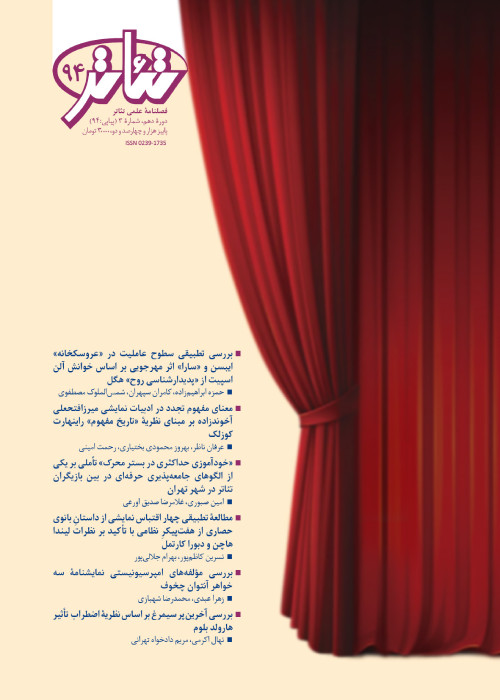The Mythological Figures of Mehr in the Rites of Mithra to the Metz Maher in Iran and the Armenia
The aim of this article to investigate the cause- and- effect relationships of the rite of the transition Mithras myth to the ritual of Mehr and Metz Maher in the cultural of the people living in Central Asia and the Caucasus from the perspective of drama anthropology. Morphology based on the cultural elements of the Mehr myth with the feature of intercultural cognitive origin, it has always been a concern of Orientalist’s and mythology researchers. The aim of this article to recognize the rites of passed from depictions of the myth of Mehr in ancient Iran and how it is used with titles such as Mets Maher in Central Asia and the Caucasus, Especially in the Armenian plateau. the evidence shows that in the BC, 2000. the myth of Mithra went to Central Asia, the Caucasus, the Black Sea, Europe and the Near East (twenty-six European and Asian countries) as a symbol of peace, friendship and love) including Armenia. and now it is still going on in some parts of the world. Central Asian people, like Iranians, adhere to the myth of Mithra and the actors related to the protection of fire, water, earth, and air. the results of this research show that there are many archetypes and representations of “Mitragan”, “Metz Maher”, “Barigendan”, “Mez Akhchik”, “Deren dez”, “Vardavar” and even the alphabet of the language that can be found among Iranians in commented. the people of Central Asia and the Caucasus are particularly popular among Armenians. It seems that the myth of Mehr in Armenia belongs to the important periods of Zorvan, Mithra and Zoroastrian religions. but its expansion in the world is related to the periods of the Achaemenid, Parthian and Sassanid empires. the period that was the origin of the cultural intermingling between Iranians and twenty-six satrapies under the Iranian empire. the research method in this article is documentary-field, and the author’s participatory observation in the research field (the performance of Metz Maher’s mythological) and it has been analyses and interpreted using the qualitative content analysis method.
- حق عضویت دریافتی صرف حمایت از نشریات عضو و نگهداری، تکمیل و توسعه مگیران میشود.
- پرداخت حق اشتراک و دانلود مقالات اجازه بازنشر آن در سایر رسانههای چاپی و دیجیتال را به کاربر نمیدهد.


